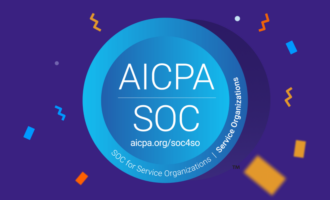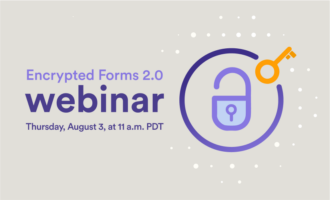To ensure they’re operating in a secure, transparent manner, organizations often undergo various checks to make sure they’re complying with specific regulations and standards. These checks can assess how they handle cybersecurity, internal data controls, and financial disclosures. Cybersecurity compliance, for example, shows that an organization is working to keep its clients’ and partners’ information safe.
Internal data control is a crucial component of compliance, ensuring that organizations exercise confidentiality and care in the handling of their internal financial and workflow data. Among security compliance standards currently in use, System and Organization Controls (SOC) and the Sarbanes-Oxley Act of 2002 (SOX) are two widely acknowledged sets of compliance standards that organizations and regulators rely on to determine acceptable levels of fiduciary trustworthiness.
But what’s the difference between SOC vs SOX compliance, and should you make sure your partner organizations practice either one? Below, we cover the basics of SOC and SOX compliance, the difference between them, and the reasons both are important for today’s organizations.
SOC vs SOX compliance: SOX regulatory law
First, let’s cover SOX — a U.S. federal law that Congress enacted to prevent accounting and securities fraud, especially on a massive scale. SOX primarily regulates accounting practices, audits, and securities law compliance disclosures at public companies. Privately held companies are subject to SOX’s penalty and liability provisions, but they aren’t required to comply with its reporting requirements.
In short, SOX is a set of ironclad rules and regulations that public and private companies are required by law to follow. If a company were to “cook the books,” falsify documents to dodge a federal investigation, or otherwise violate SOX’s rules and standards, it would face serious legal consequences.
In day-to-day business, those rules and standards govern the handling of internal reporting, data controls, and other elements of financial accounting and disclosure. The federal government requires every U.S. public corporation, large or small, to produce an annual SOX report. The report must contain the organization’s analysis of its internal controls and financial disclosures — and an independent auditor must approve it.
SOC vs SOX compliance: SOC control standards
Next, we’ll talk about SOC standards. SOC is, by definition, a compliance metric that a private, third-party organization (the American Institute of Certified Public Accountants, or AICPA) applies, which requires organizations seeking to prove their voluntary compliance with SOC standards to undergo an audit.
A certified public accountant (CPA) performs a SOC audit and examines whether an organization follows core SOC principles. The audit culminates in the issuance of a report attesting to the trustworthiness of the organization under scrutiny. It’s an internationally recognized standard.
There are different types of SOC verification: For example, SOC 2 applies to service organizations and has its own set of core principles. Those principles encompass security, availability, processing integrity, confidentiality, and privacy — and organizations under review for SOC 2 compliance must prove that they adhere to all principles that are relevant to their operations. The review takes at least six months; it can take longer, depending on the scale and complexity of the subject organization.
Ali Allage, CEO of cybersecurity firm BlueSteel Cybersecurity, says, “Companies that undergo SOC 2 auditing often enhance their security measures and overall efficiency. The audit report helps them streamline their operations and controls based on the understanding of cybersecurity threats their customers face.”
For service organizations, then, SOC 2 is an extra measure of compliance and review, through which a company can show that it exceeds the basic legal requirements of SOX.
The difference and why it matters
The biggest difference between the two types of compliance is simple: SOX is a mandatory government standard, often enforced by the U.S. Securities and Exchange Commission (SEC), while SOC is a voluntary form of security self-regulation, overseen and enforced by non-government entities. Any partner organization you wish to work with should abide by SOX regulations; if it’s SOC-compliant as well, that’s even better.
To gain that extra layer of security compliance and ensure every client’s data and financials are secure, Jotform Enterprise attained a SOC 2 Type II attestation. Since the Enterprise platform fulfills these above-and-beyond standards, even large businesses can be assured that Jotform Enterprise services meet the highest standards of security.
Now that you know the basics of SOC vs SOX, it will be easier to tell which set of standards is most relevant for your organization.























Send Comment: